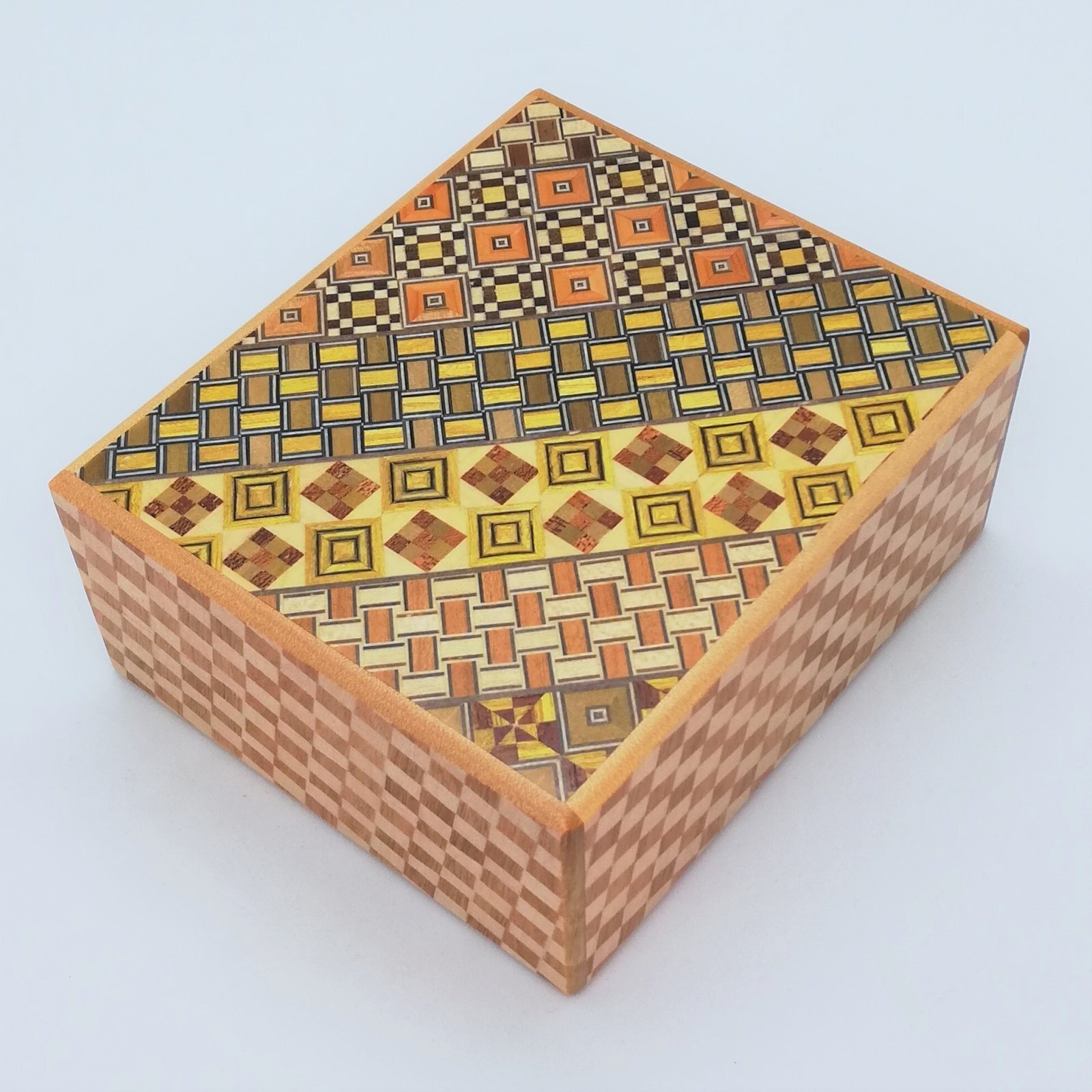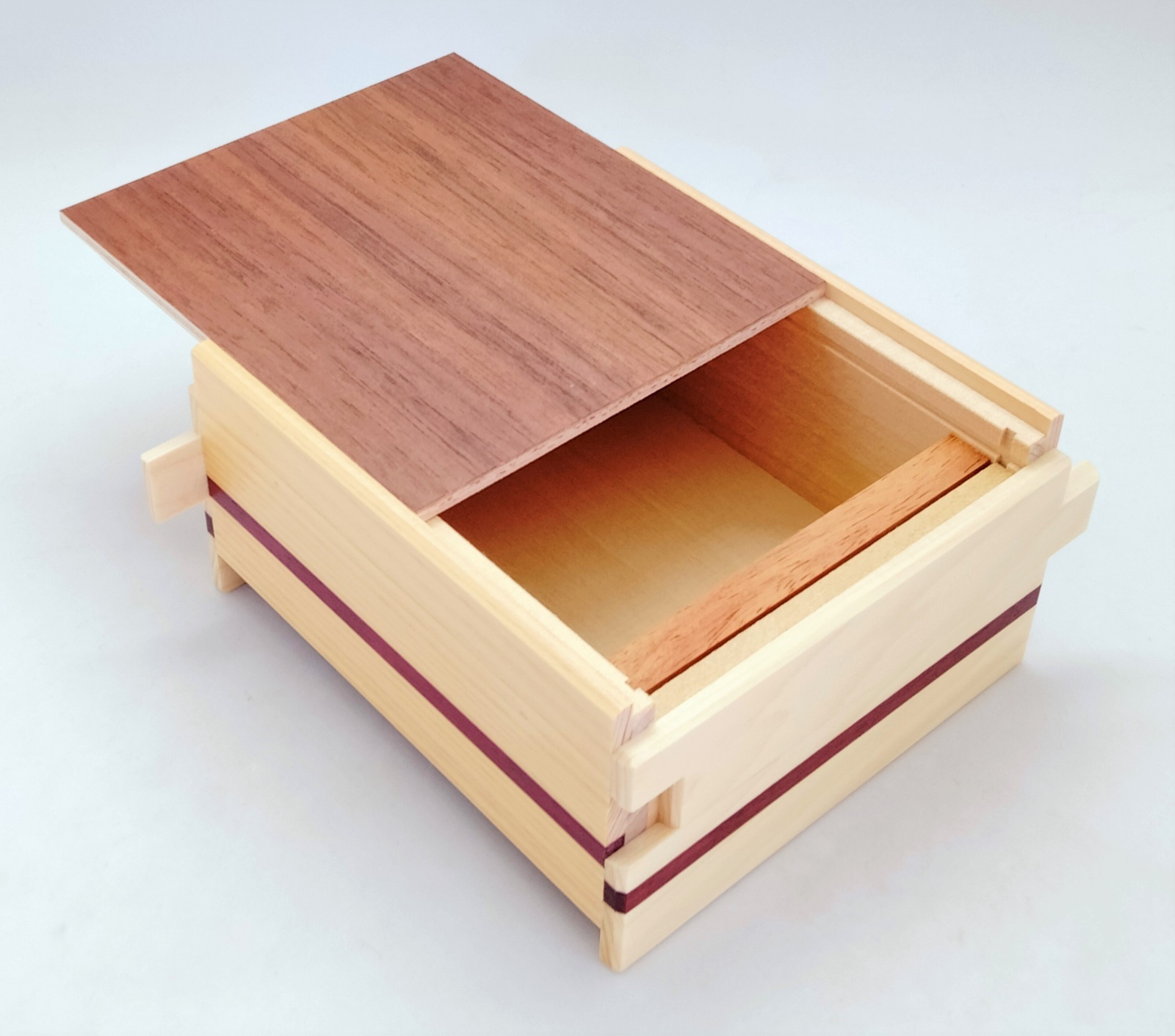Wide puzzle box
I had errands to run today and was out all day, so I couldn't make any progress with my work. Instead, let me share one of my past works: the Wide 14-step Japanese puzzle box. This is one of the pieces I still produce today. Recently, I’ve been short on traditional yosegi sheets for this piece, so I’m unable to make the traditional yosegi type, but I can still create other designs. I’ve been thinking of making it again after a while.
This box is one of my favorite pieces, though it’s not particularly popular..haha😅 I really love its shape. It’s unique for a Japanese puzzle box, and I find it quite cute. The base for this piece is the 4-sun size puzzle box. The height and length are almost the same as the 4-sun size, but the width is different. It feels like the 4-sun box stretched horizontally.
This box overcomes one of the forbidden techniques (<< a bit of an exaggeration😂) of Japanese puzzle boxes: its width. If a Japanese puzzle box craftsman were to see this box, they would probably wonder if the side sliding panels (aruki) move smoothly. This is because, typically, the longer the width of the box, the harder it is for the aruki to move smoothly. That’s why, for better functionality, the width of most puzzle boxes is about half the length.
You might be able to imagine that a vertically long board moves more smoothly when it slides down than a horizontally long one. To overcome this, I made a few adjustments, which made it possible. It's a bit difficult to explain here, but it worked out well. So, no need to worry!, it moves smoothly. Because of this, the internal space is larger, allowing for more storage.
Also, this is more of a convenience on my part, but the dimensions of this box are the same as those of the polygonal Japanese puzzle boxes (in terms of width-to-height ratio). So, I use the same outer box (gift box) as the hexagonal and pentagonal puzzle boxes😄
This box is one of my favorite pieces, though it’s not particularly popular..haha😅 I really love its shape. It’s unique for a Japanese puzzle box, and I find it quite cute. The base for this piece is the 4-sun size puzzle box. The height and length are almost the same as the 4-sun size, but the width is different. It feels like the 4-sun box stretched horizontally.
This box overcomes one of the forbidden techniques (<< a bit of an exaggeration😂) of Japanese puzzle boxes: its width. If a Japanese puzzle box craftsman were to see this box, they would probably wonder if the side sliding panels (aruki) move smoothly. This is because, typically, the longer the width of the box, the harder it is for the aruki to move smoothly. That’s why, for better functionality, the width of most puzzle boxes is about half the length.
You might be able to imagine that a vertically long board moves more smoothly when it slides down than a horizontally long one. To overcome this, I made a few adjustments, which made it possible. It's a bit difficult to explain here, but it worked out well. So, no need to worry!, it moves smoothly. Because of this, the internal space is larger, allowing for more storage.
Also, this is more of a convenience on my part, but the dimensions of this box are the same as those of the polygonal Japanese puzzle boxes (in terms of width-to-height ratio). So, I use the same outer box (gift box) as the hexagonal and pentagonal puzzle boxes😄

